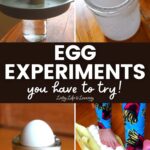4 Egg Experiments You Have to Try
My kids love any science experiment that involves a mess or even the possibility of a mess. They love to be fully hands-on and watching the cause and effect of their favorite experiments, even the ones they have done over and over.
With spring in full swing and Easter right around the corner, I thought that some egg experiments were called for. Some of them we have done before, and some we gave a try for the first time. Grab a couple of dozen eggs and pick a few of these experiments or do them all together with the kids.
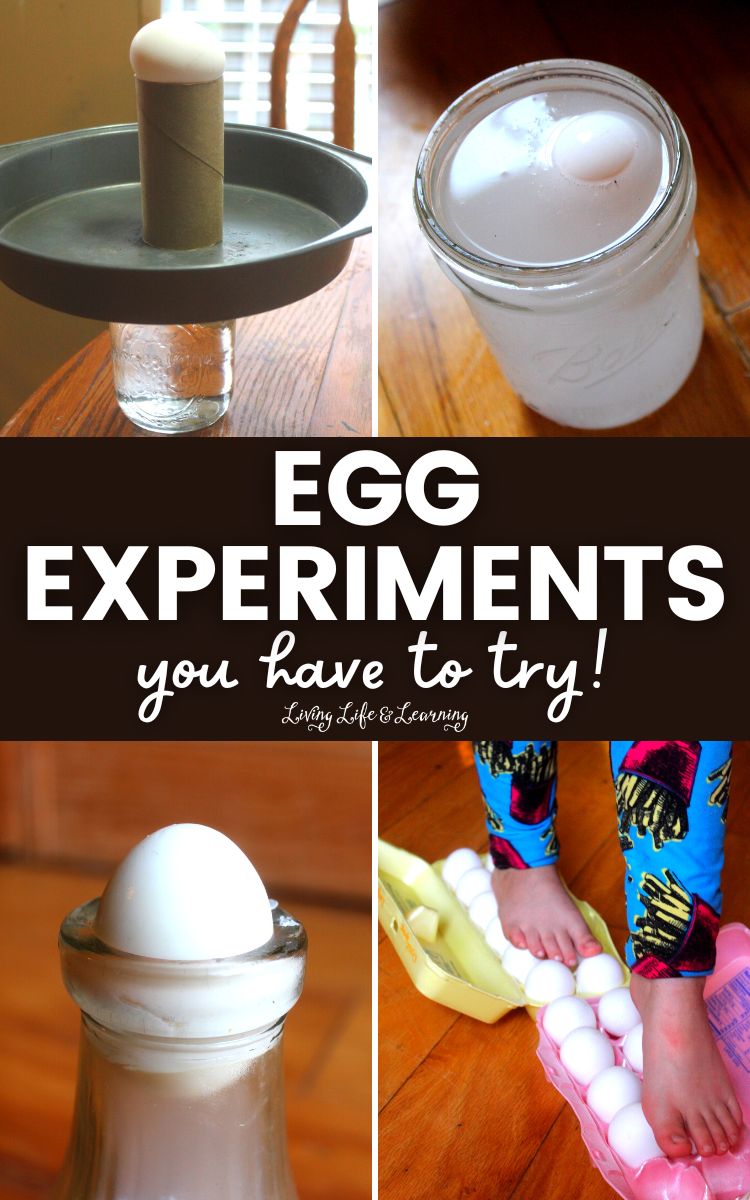
This post may contain affiliate links meaning I get commissions for purchases made through links in this post. Read my disclosure policy here.
Recommended Science Experiment Kits
My Super Chemistry Lab Interactive DIY Scientist Kit
Have a fun chemistry experience with this DIY scientist kit that includes pH test strips, cornflour, sodium alginate, calcium chloride, guar gum, citric acid, and more!
X Workbox Science Experiment Kit
Try two awesome projects (Buzz Wire Game and Fruit Battery) with this “Electricity” STEM box.
4 Egg Experiments You Have to Try
Before doing each experiment have your children hypothesize what will be the outcome of each one. Older children can write out their hypothesis and their findings.
Sink or Float Egg Experiment
This experiment is a great test in the buoyancy of fresh and saltwater. You will need 2 clear glass jars or bowls, table salt, and 2 eggs. Fill your two glass jars ¾ of the way full with very warm water, make sure they are larger than your eggs in width and height. Stir ¼ cup of salt into one jar until it is dissolved.
Gently place an egg in each jar, what happens?
How it works – The salt makes the water heavier which allows objects in the water to float to the surface.
Try experimenting with different amounts of salt in the water and let your child discover what happens.
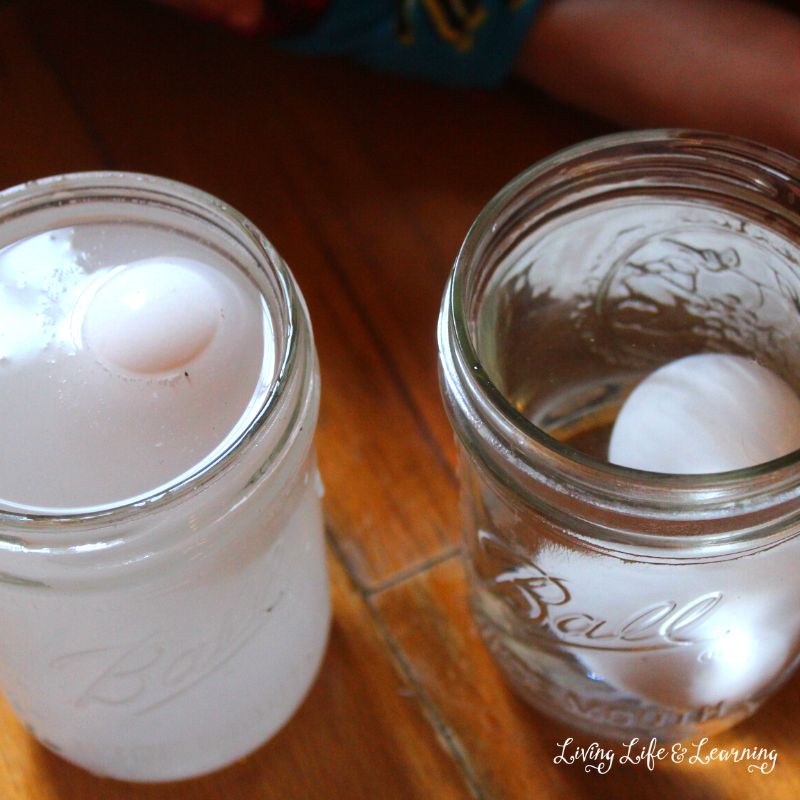
The Egg Drop
What you will need for this experiment is a glass of water ¾ of the way full, a pie tin, an empty paper roll, and an egg (oh ya and some towels in case you need to practice a few times to get it right).
Center the pie tin on top of the glass of water, then center your paper roll on the pie tin, carefully place the egg on top of the roll. What we want to do is get the egg into the glass of water by only touching the pie tin.
You can whack it quickly with your hand or you can do as we did- set the jar close to the edge of the table so that the pie tin is even with the edge of the table, step on the bristles of a broom and pull the handle back, let it snap towards the pan.
Hopefully what has happened is that the pan and paper roll fly out and the egg drops inside the water.
How does it work? Newton’s first law of motion comes into play here, and object a rest stays at rest (the cup and egg) and an object in motion stays in motion (the roll and pie tin). The egg stays in place but with nothing to support, drops straight down.
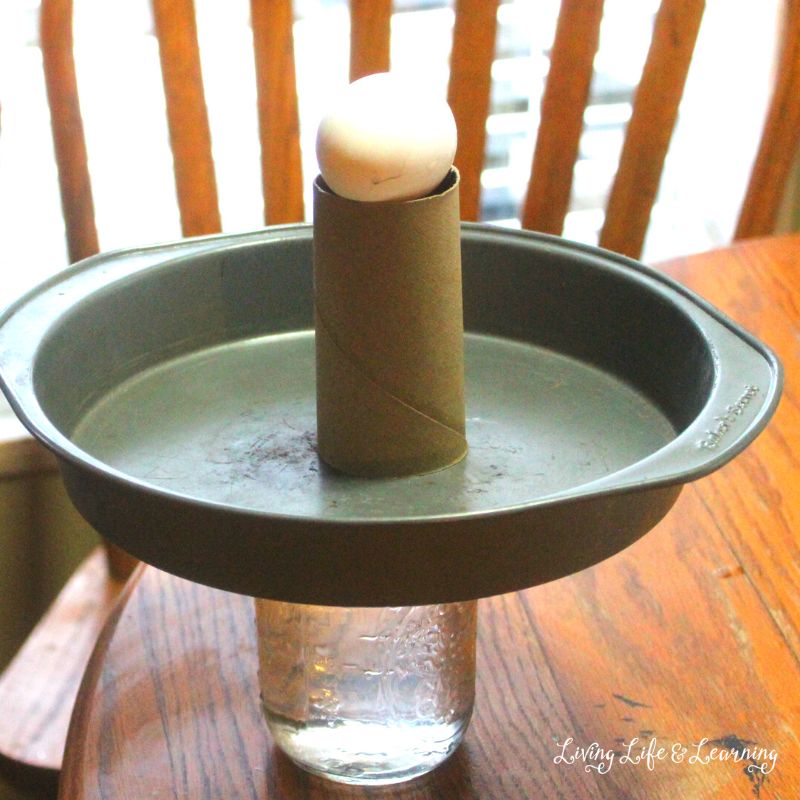
Egg Vacuum Experiment
Kids will be amazed as the egg gets sucked into a bottle that is obviously smaller at the opening than the egg itself is. How in the world does this happen?
For this, experiment you will need a hard-boiled egg, a glass bottle with an opening that is smaller than the widest part of your egg, a match/lighter, and scrap paper.
Cut a strip of paper about 6” long and 2” wide, twist firmly, light the paper and drop it into the jar. Set the egg on top wider side down, once the paper burns itself out the egg will be drawn slowly into the bottle until it hits the bottom!
How does it work? The air, heated by the fire, expands. As the air begins to cool the molecules shrink up and create a vacuum. The air on the outside tries to press into the bottle and suck the egg into the vacuum.
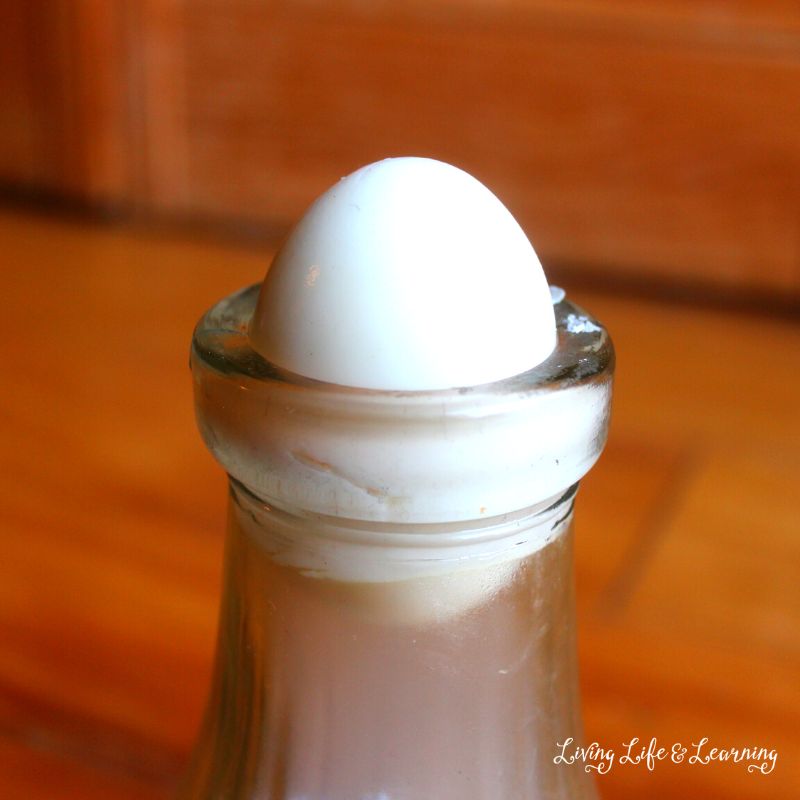
Recommended Science Books for Kids
Awesome Science Experiments for Kids: 100+ Fun STEM / STEAM Projects and Why They Work (Awesome STEAM Activities for Kids)The Everything Kids’ Science Experiments Book: Boil Ice, Float Water, Measure Gravity-Challenge the World Around You!Awesome Kitchen Science Experiments for Kids: 50 STEAM Projects You Can Eat! (Awesome STEAM Activities for Kids)Awesome Outdoor Science Experiments for Kids: 50+ STEAM Projects and Why They Work (Awesome STEAM Activities for Kids)Steve Spangler’s Super-Cool Science Experiments for Kids: 50 mind-blowing STEM projects you can do at homeSmithsonian 10-Minute Science Experiments: 50+ quick, easy and awesome projects for kids
Walking on Eggs
Walking on eggshells is no fun unless it’s a hands-on (err feet on) experiment where your little ones get to be involved. All you need is to grab 2 dozen eggs and a willing barefooted kid, maybe a plastic dropcloth just in case.
Try a couple of things with your eggs first-breaking on the side of a bowl and encouraging your child to squeeze the egg in their hand. What happens? Why does the egg break when hit on the bowl but not in a hand?
Now have your child get on the eggs with your help and try to walk over them applying even pressure with their feet, if they dig in with toes or heels in spots, however, they may break the eggs.
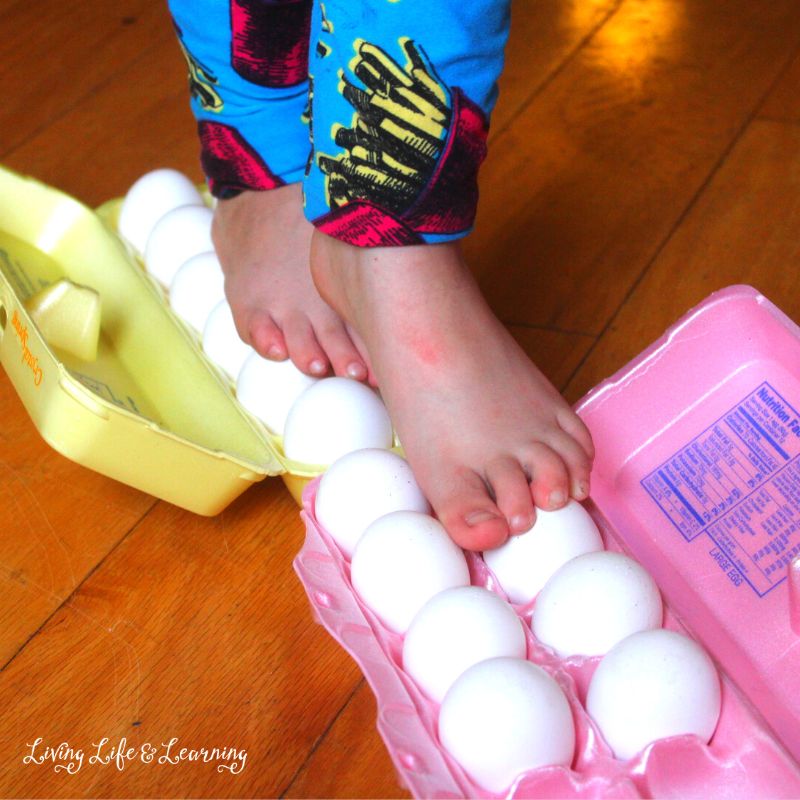
How does it work? The simple answer is that when squeezed in your hand even pressure is applied to the curved surface of the egg and it distributes the force evenly.
Cracking it on a hard bowl or pan on the other hand makes all the force hit in one small area and the egg breaks. The same principle applies for walking on eggs, when even pressure is applied over the entire surface of the eggs they will not break.
More Science Experiments
100+ Science Worksheets for Kids
Glitter Germ Science Experiment
Hacks to Get Kids to Wash Their Hands by A Little Pinch of Perfect
Learn All About Germs Through Picture Books! by Artsy Momma

